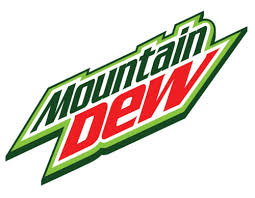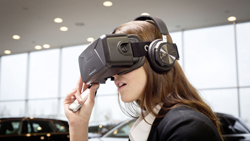VR Marketing: Virtually a Reality?
Is VR Marketing actually something we need to concern ourselves with? In short, yes it is. The simple fact is that the fascination in the 1990s was more (if you’ll excuse the horrendous pun) virtual than a plausible reality as the tech wasn’t there; it was basically just a cool concept. Now, we have a much better defined technology that is likely to be available for general consumption at some point in 2015, for a not unreasonable price tag. Oculus Rift has a lot of cool functions, but it’s going to be quite a different way of doing things, and it’ll probably take time to get a decent sized market going. You can’t ignore it though, because cheaper more accessible alternatives already exist. Say hello to Google Cardboard. It’s a VR system which works from your mobile phone that you can build the old fashioned Blue Peter way: out of stuff you find in your garage (remember to make sure you get help from an adult when using the scissors). It’s cheap, retailing from £5 upwards and, whilst it does require a few more developmental features than your regular app, it’s not an entirely new system so it should be easier to acquire or upskill employees to make it work. All of this means that mobile based VR seems a much surer bet for you to focus on if you do decide to start going down the VR route. But what on earth can you use VR for? Like all forms of marketing, content is still king. Crummy apps which jump on a the bandwagon with no real purpose to them might be cool for a short while, but won’t necessarily deliver any real ROI. It may go viral, it may increase your brand awareness, but that’s not guaranteed, and it’s a lot of money to sink into something that may not pay off. Like most things, utilising VR will depend on who your target audience is. Working in the tech industry with a load of early adopters? Then VR could be a very good way to separate you from the competition. If you’re a financial service business, there’s probably less use you can get out of VR. Note that I say less use, not no use - that’s because there’s still potential for most companies to take advantage of VR at some point. Let’s say Analytics Software Incorporated has a stand at a business fair. In order to get more people to their stand they can utilise VR to provide a new way of experiencing their software. They can input some data, and use the VR as a way to manipulate it and find correlations between the different data sets. It’s all stuff that their software does, they’re just utilising the VR experience to provide a new way of manipulating the data that will get people’s attention at the fair. Eye catching, cool and a great way to get a conversation started.
In essence though, VR is something for the future for most businesses and not something they need to worry about now. But there are ways most businesses can use VR; it just requires some thought and creativity. There is one downside to VR though that I haven’t mentioned - you look like this when you’re using it:



